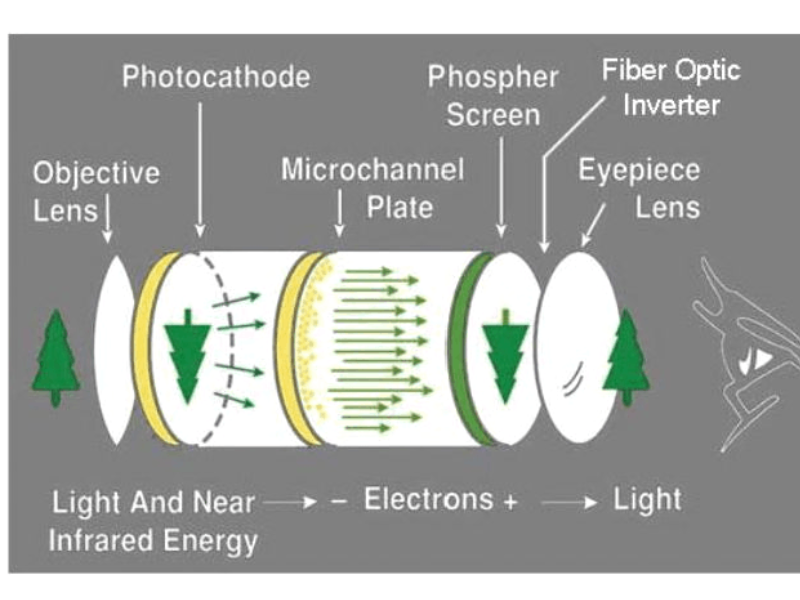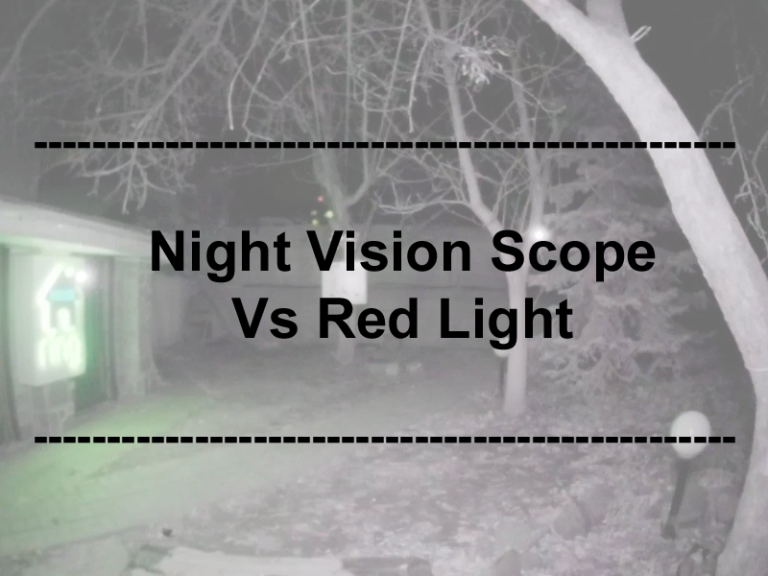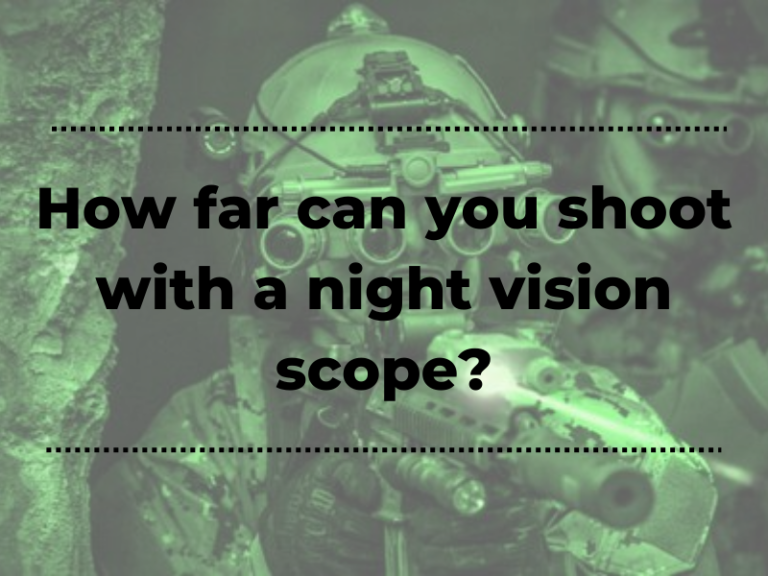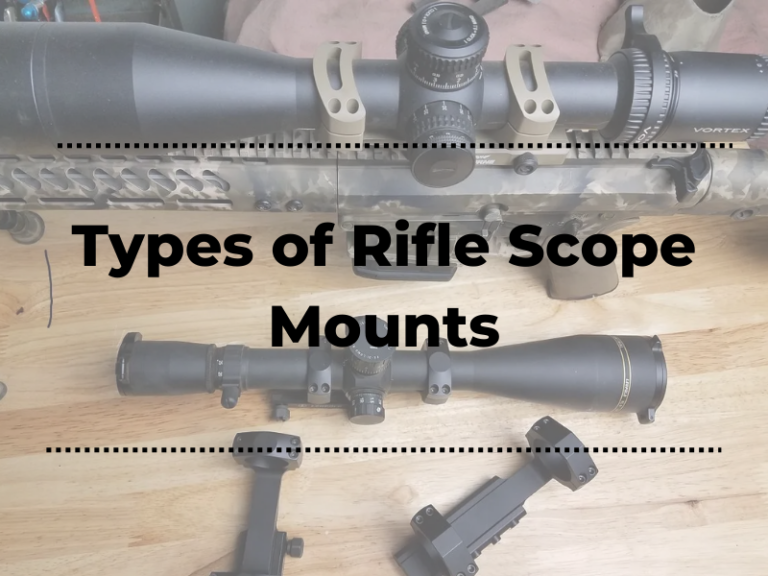How Does Night Vision Work? [Ultimate Guide and Generations]
How does night vision work? Humans have two eyes, each containing a retina. The retina is a thin layer of tissue at the back of the eye that contains photoreceptor cells. The human eye has two types of photoreceptors: rods and cones. The cones are responsible for color vision, while the rods are responsible for night vision.
When light enters the eye, it hits the retina and is converted into electrical signals that travel to the brain. The brain interprets these signals and creates an image. In low-light conditions, the pupils dilate (enlarge) to allow more light in. This allows more rod phospher screen to be activated, resulting in better night vision.
Know everything about how night vision works below;
How Night Vision Works?
For a lot of consumers, the night vision market isn’t exactly a well known one. However, this technology is incredibly important. It’s important that you understand how night vision works. If you don’t know how it works, this article will provide information about it.
Night vision technology is all about the light that is captured during the day. It has been used in warfare for quite a while. This light is converted into images that are then viewed through an eyepiece. At night, this light is not as bright.
That is why this technology requires the use of a night-vision device. It has the ability to convert night vision technology. That is the reason why a lot of people have bought night vision goggles and night vision devices.
They are usually used when there is no light at all. This allows the consumer to view things like animals, people, and moving objects at night. There are many benefits of buying this product.
You can easily spot a person or animal from miles away. Also, it allows you to spot any type of object.
These goggles have also come a long way since they first became available. This makes them safe and comfortable to use. It also gives you a clear and unobstructed view.
There are different types of night vision technologies. These includes:
1. Passive infrared
2. Active infrared
Also, night vision devices are different than night vision goggles. You would purchase this device from any local or online retailer. These devices are more expensive than goggles.
Passive Infrared – Passive infrared is the type of night vision used to detect motion. This is also called a heat-detecting camera. This camera is a form of night vision technology.
This camera is also used to detect people and animals at night. It doesn’t work on small items. This type of device is quite expensive. It will cost you about $1,000.
Active infrared – Active infrared is the most advanced type of night vision. This type of device is also a camera.
This device will see an image even in low light. The night vision technology is made using laser or infrared light.
Infrared light is used because the light doesn’t have to be as bright in order for the system to work. This technology is mainly used for military purposes.

This technology is used in security, defense, and law enforcement. This type of device is also used for commercial purposes.
This is used to see through the darkness. For example, you would use this for looking at things in a shady area. This technology is great for camping. This is one of the main reasons that people use night vision technology.
If you don’t know how to set it up, this article will help you do that. First, you will need to get the correct equipment.
This equipment includes a power source and a night vision device. Then, you will need to set the time and date.
You will want to calibrate the camera as well. Finally, you will need to adjust the screen. This is the area that shows the images.
Night Vision Generations
A night vision device can be 1st, 2nd, 3rd, or 4th generation. The difference between the various generations of viewers is the photocathode intensifier tube used for the different devices. The intensifier tube is the fulcrum and foundation of the apparatus.
1st Generation
The 1st generation is currently the night vision standard in the world. Using the basic principles described in the previous chapter, a 1st generation viewer amplifies existing light thousands of times, allowing the user to see in the dark. These devices offer a bright and sharp image at an affordable cost for everyone and are perfect for use on a boat, observing animals, or for the safety of your possessions.
The user, looking through the viewer of 1st gen., can observe the following details:
- A negligible disturbance when the unit is active
- The image may be slightly fuzzy near the edges (known as “Geometric Distortion”)
- When a 1st gen. the green screen remains for a few more minutes
2nd Generation
The 2nd generation is mainly used by law enforcement or for professional applications. This is because the costs of a 2nd generation night viewer are approximately 500-1000 euros higher than those of a 1st generation viewer. The main difference between 1st and 2nd generations is the addition of a “microchannel platter,” which we will call PMC. The PMC is an electron amplifier located directly behind the photocathode tube. The PMC is made up of millions of small parallel glass tubes.
As electrons pass through these microtubes, thousands more electrons are released. This additional process amplifies the light many times more than a first-generation tube and allows you to see much sharper and brighter images.
3rd Generation
In the 3rd generation tubes, the chemical compound is added to the photocathode tube, which further improves the images making them even clearer and, above all, sharp. An ion film is also added, extending the photocathode tubes’ average life. Third-generation viewers offer the user excellent images even in very low light conditions.
4th Generation
The 4th generation viewers use tubes with controlled “filmless.” This particular technology represents the greatest innovation of the last 10 years in the field of night vision. Removing the ion film and “checking” the system results in 4th gen. greater target detection range and better resolution, especially in extreme low light conditions. The use of “filmless” technology and self-controlled feeding led to these results:
- Up to 100% improvement in photocathode tube response
- Excellent performance, even in almost total darkness. (better signal-to-noise ratio)
- At least 3x increase in brightness and resolution. (min.36 lp / mm compared to 12 lp / mm)
In all light conditions, the 4th generation represents the best in night vision due to its significant improvement in contrast level and performance.
Note: The term 4th generation is used and accepted to describe “filmless controlled” technology tubes. This designation is widely debated and is nevertheless referred to by the United States military for pipes using this technology.
The Range of night vision goggles
Many variables can affect the range of various night vision goggles. First of all, it is also good to specify the target we want to see, because there is a lot of difference between looking at, for example, a boat in the open sea or a small hare in a forest. Of course, the larger the “TARGET” object, the easier it will be to see it.
Furthermore, there is the “recognition range,” which is the range in which the night vision device allows us to identify a target and be able to understand what it is, and the “detection range,” in which we can identify only something. That moves without, however, understanding what it is.
Another very important variable is the light conditions present. We may find ourselves operating on a starry night, a full moon, or an overcast sky. The table on the side expressed in Yards (1 Y = 0.9144 MT) shows the generic range of the various night goggles based on the light conditions, the target we want to see, and the generation of the viewer used.
The important thing is to remember that the night vision device was created to see in the dark and not to see far away as with ordinary binoculars.
What kind of night vision do animals use?
In the animal kingdom, there are many different types of night vision. Some animals, such as raccoons and cats, have what is called “scotopic vision.” This means that they can see in low light conditions by using rods, which are specialized cells in the eye that allow for black and white vision. Other animals, such as deer and horses, have “photopic vision.”
This means that they can see in color in low light conditions by using cones, which are also specialized cells in the eye. Each type of night vision has its own advantages and disadvantages.
How does a thermal image sensor work?
Thermal imaging sensors use a very small, low-power infrared emitter and receiver to detect the heat signature of objects within their field of view. By measuring the amount of heat generated by an object, the sensor can provide detailed information about its size, shape, and temperature.
How the human eye sees in the dark?
Night visions are a natural ability that humans have to see in the dark. The retina in the human eye contains special cells called rods and cones. Rods are used to see in the dark, and cones are used to see colors.
When it is dark, the pupils of the eyes open up to let in more light. This allows more light to hit the rods, which then sends a signal to the brain telling it what objects are in front of them. Night visions can also be enhanced by using technology like night vision goggles or cameras.
The different ways that night vision can be used
Night vision can be used in a variety of ways.
- It can be used for security purposes, to see in the dark, or to detect movement.
- The scope can also be used for recreational activities, such as hunting and bird watching.
- Some people use night vision to navigate in unfamiliar areas or to watch wildlife.
How to improve your night vision
There are a few things you can do to help improve your night vision. One is to make sure you get enough sleep. When you’re tired, your eyes are not as effective at processing images in low light. You can also eat foods that are high in antioxidants, like carrots and spinach.
These foods help improve blood circulation to the eyes and protect them from damage. You can also try using eye drops designed to improve night vision.
FAQs
Does night vision need light?
Yes, night vision needs light to work.
Does night vision work underwater?
Yes, night vision does work underwater. However, the quality of the image will be reduced due to the lower light levels.
Does night vision work through glass?
Yes, night vision does work through glass. The light from the camera passes through the glass and is seen by the viewer.
How can I make myself have permanent night vision?
There is no surefire way to achieve permanent night vision, but a few things can help.
First, make sure you have good eyesight by getting regular eye exams and wearing glasses if needed. Second, use an eye patch to block out bright light during the day and practice using your night vision at night.
Finally, use a dark room to simulate nighttime conditions and practice looking for objects and people in the dark.
Conclusion
Night vision technology is an incredible invention that has helped humans and animals see in the dark for centuries. While technology has evolved, the basics remain the same.
By understanding how night vision works, you can better use this tool and be better prepared for any situation that may require its use. If you are interested in purchasing a pair of night-vision goggles, be sure to do your research to find the right pair for your needs.





